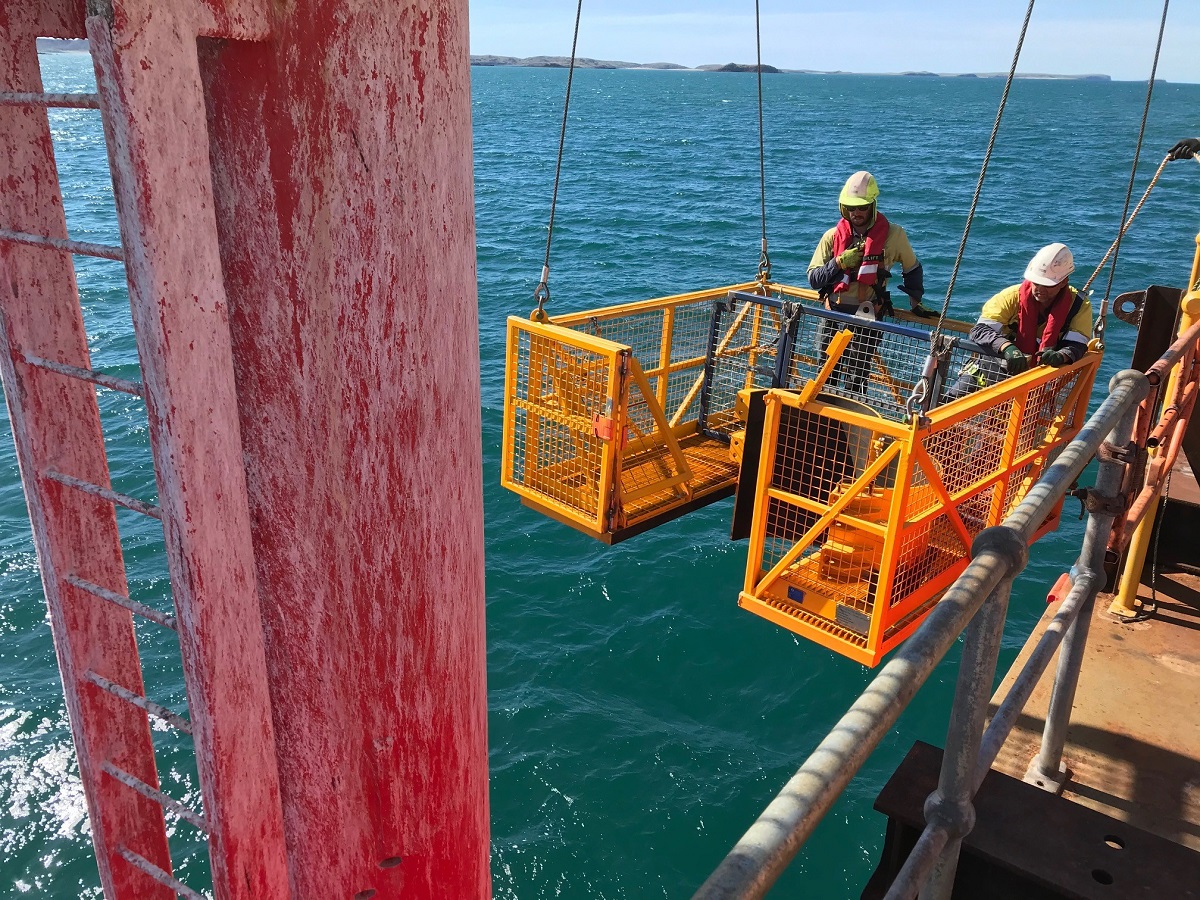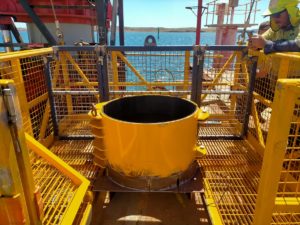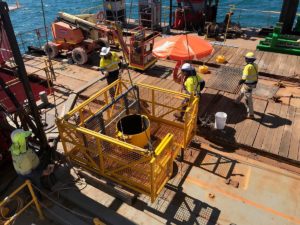
A key aspect of every project we undertake is ensuring that what we design can be constructed efficiently and safely; in other words, ensuring the constructability of the project by identifying and overcoming any potential obstacles that prevent the solution from being completed.
On a recent project in Western Australia, Madsen Giersing was engaged by Maritime Constructions to support the refurbishment of piled navigation aids for the Dampier Navigational Aids Upgrade project for Rio Tinto. As with many offshore projects, it was essential to provide a solution that would allow team members to access free-standing piles, work above the open water safely and as freely as possible. Our team created a bespoke workbox that allowed them to do just that. The design of the workbox has been approved and formally registered by the Department of Mines, Industry Regulation and Safety (DMIRS), as required by Western Australia’s OHS&W Regulations. Madsen Giersing worked with the client and DMIRS to ensure this bespoke workbox met the local regulations and was fit for the purpose required by Maritime Constructions.

The workbox is able to be lifted in position against a free-standing pile. A clamp is then installed around the pile to support the weight of the workbox, personnel and their equipment and materials. When positioned, the slings are removed, and the personal have safe access to the pile to work as required.

Lasse Madsen outlined the thinking behind the solution, “For this project, we needed to construct a solution that achieved multiple outcomes. Firstly we had to create a reusable solution that could be implemented on any of the project’s piles. It also had to be safe and provide a suitable working environment allowing work crews to complete their tasks efficiently and easily. Although a simple concept, it was not without its own peculiar challenges. The workbox solution aided the constructability of the project considerably and provided a cost-effective outcome as it can be reused during this phase of works and on any future remediation or maintenance that may be required.”


